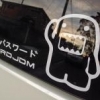Idle Water Temp
Announcements
-
Similar Content
-
Latest Posts
-
Pfft. As if I'd ever point a high pressure washer at my car.
-
The nature of my commute has changed. Way back then it was traffic lights all the way, for ~28km. It sucked. When they finally stitched the expressway together I could do a good 15+km of it at a steady 80-100 with no stopping. That alone has gotten me down to flat 10s. Prior to that it was mid-high 10s. I can't remember the delta that I saw when I got the idle down. It was only ~150 rpm, because the idle speed was never terrible, but for the delta in consumption to be noticeable it would have had to have been at least 0.2-0.3 L/100km - which is not to be sneezed at when it comes for absolute free. It's only about 50L per year, but that's ~$100. A few extra pizzas is always welcome. Note that I have a record of every tank of fuel that has ever gone through my car except for a handful put in by someone else, like my mechanic. I can show you the difference between stock RB20 and tuned RB20, stock RB5Neo and tuned, winter and summer fuel blends, winter and summer fuel blends when the ambient temperature is not appropriate for the blend, working O2 sensor, blown O2 sensor, boosting f**k out of it and frightened to boost it because it is pinging, and so on. OK, I probably can't do all that now with 100% clarity - but at the time when any of those things were in event, you could see it in the records. There's 25+ years of simple tank after tank records, so you have to look for landmarks to work out approximately how old any single record is. What's really important is the meta data and that lives in my head.
-
If you're claiming the issues are not skyline specific, then either the USA is living in the 90s / early 2000s, OR you have the issue of "survivor bias". Which is you're mainly hearing and listening to those with terrible experiences, and haven't found the guys who have cars with good decent builds and no problems. It happens in AU too, that plenty of people keep having issues, and they keep going to the workshops that are known to be shit "because I read on the internet". Even worse, are those who keep posting on the internet as though they know for a fact what something is, when they've never touched/looked at said item in their life, and again are making assumptions, based on something they read, or because it's a certain way in other cars. It's even funnier when those same people debate the facts with the people who've lived and breathed this stuff for over 15 years. Example, I've had someone tell me you can't do something with a Skyline, because they read it on the internet, except I can tell they're wrong, as I did that exact thing back in 2008 with my Skyline.
-
The funniest part I saw, was someone would bitch and moan on FB about something, Andy would be the one to respond, asking for more info, if he could contact them, what the engine setup is, what their config file was, and 95% of the responses were people just going "der! It doesn't work" and Andy going "What doesn't work?" And then going "The firmware!" And they'd go around in circles as no one could ever give information, and Haltech couldn't fault things on the bench, (especially when people wouldn't give any specifics). Many moons ago, when Andy was back at e420c stage, he reached out to me, and asked me to test different plug and play looms for him (already had an e420c in the car on his V1 PNP loom). And he kept asking me, as I was competent enough to be able to give him some specific feedback on what was/wasn't working, how to replicate the faults etc, and work through things with him. Most people are terrible at answering the questions they're asked, or being able to provide quality feedback other than "it doesn't work".
-
By joshuaho96 · Posted
I say it often, none of this stuff is really Skyline-specific per se. But in general there's not a lot of people who actually know what they're doing. A lot of people charging like they do. Agile software development probably isn't the greatest idea for an engine controller.
-






Recommended Posts
Create an account or sign in to comment
You need to be a member in order to leave a comment
Create an account
Sign up for a new account in our community. It's easy!
Register a new accountSign in
Already have an account? Sign in here.
Sign In Now